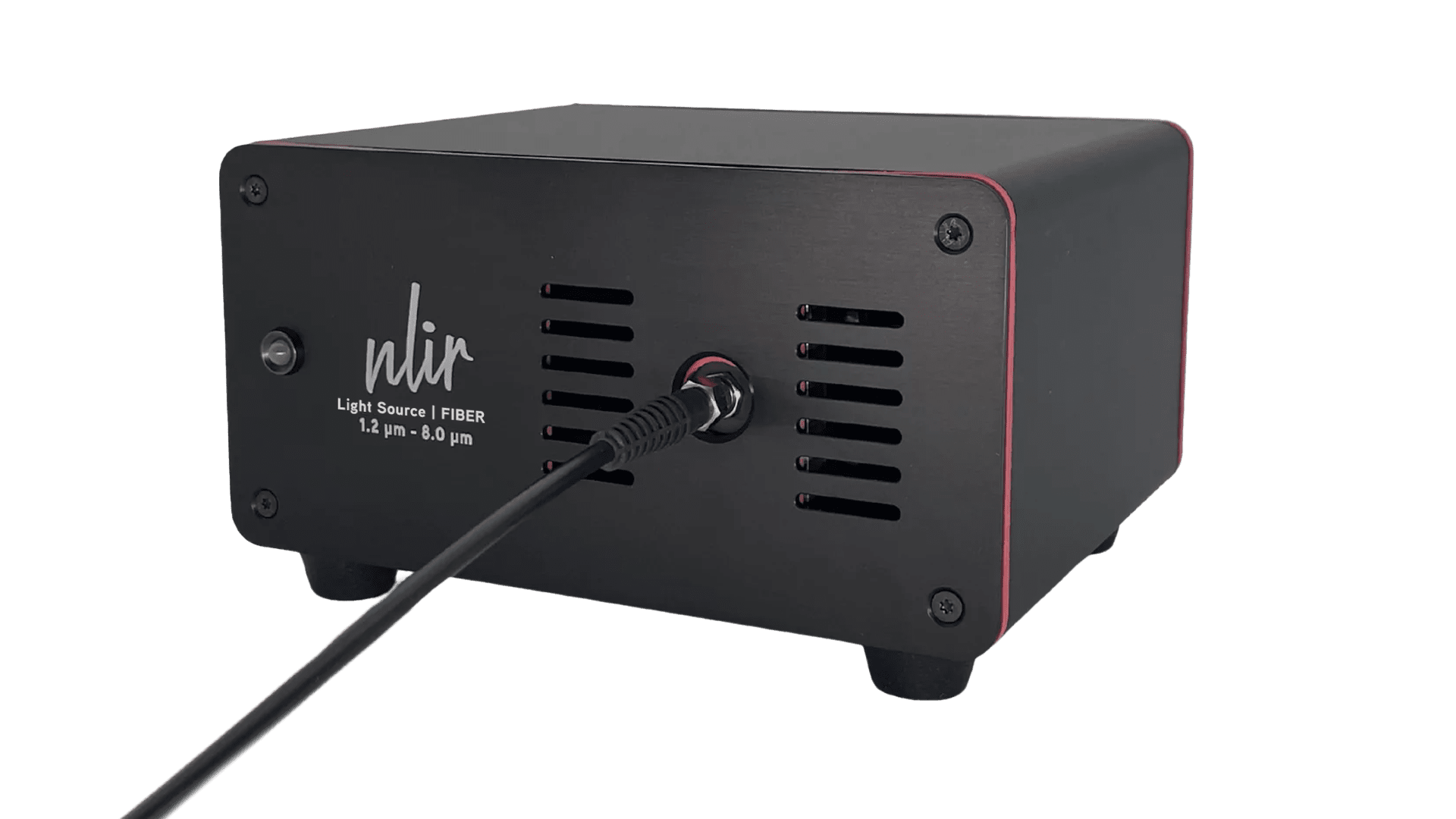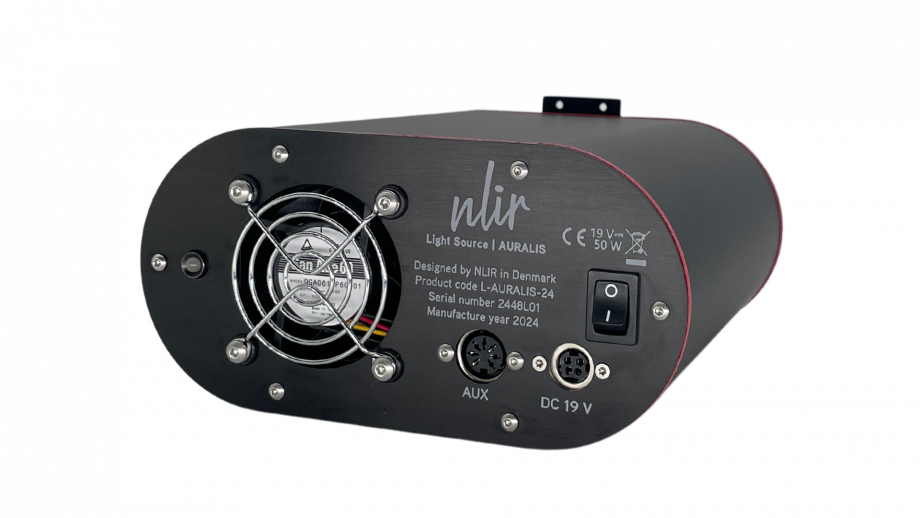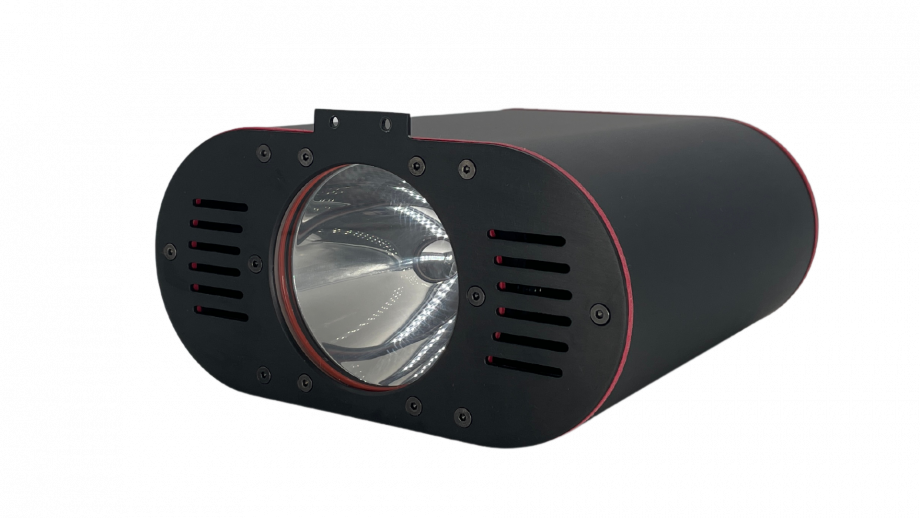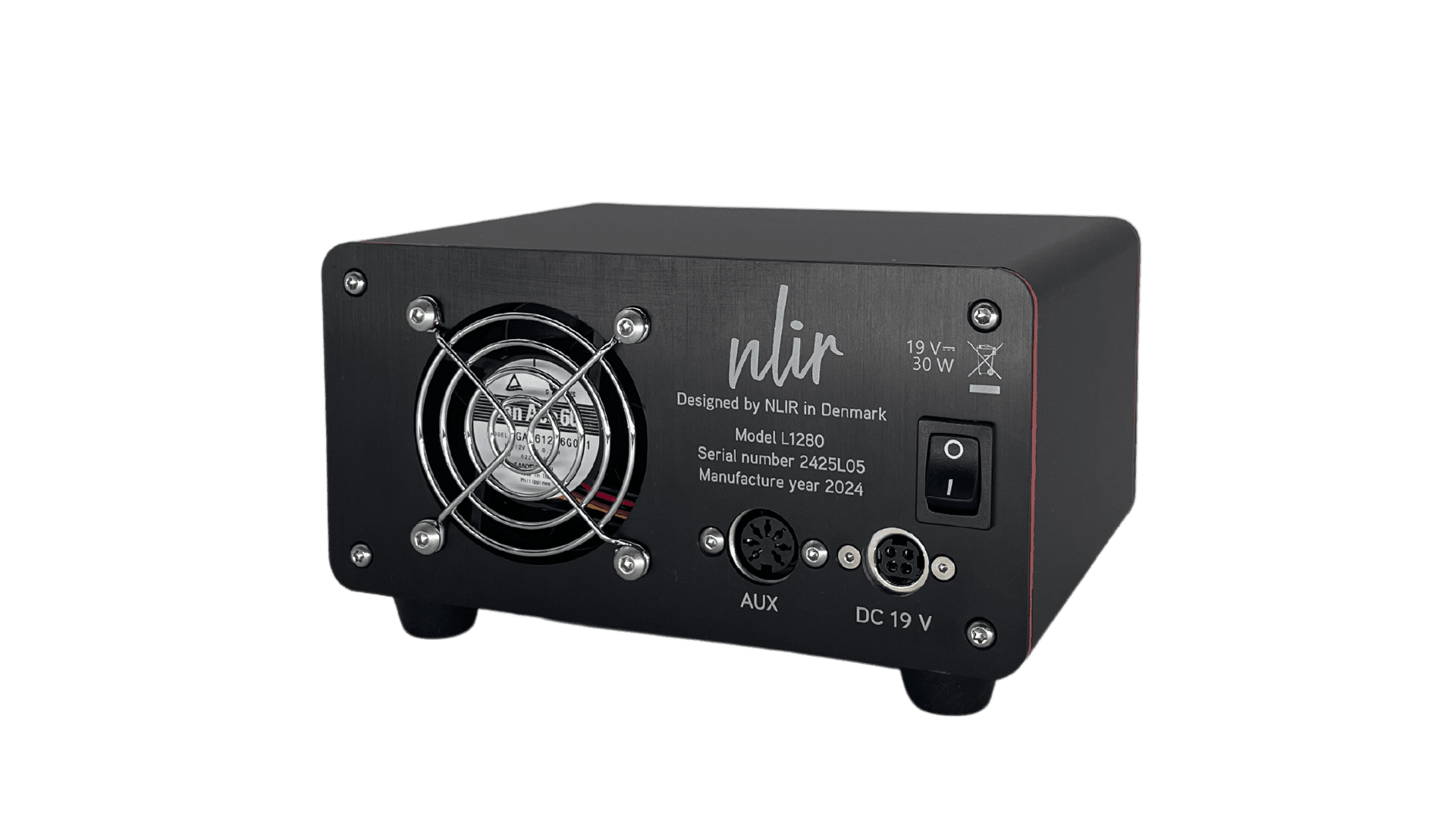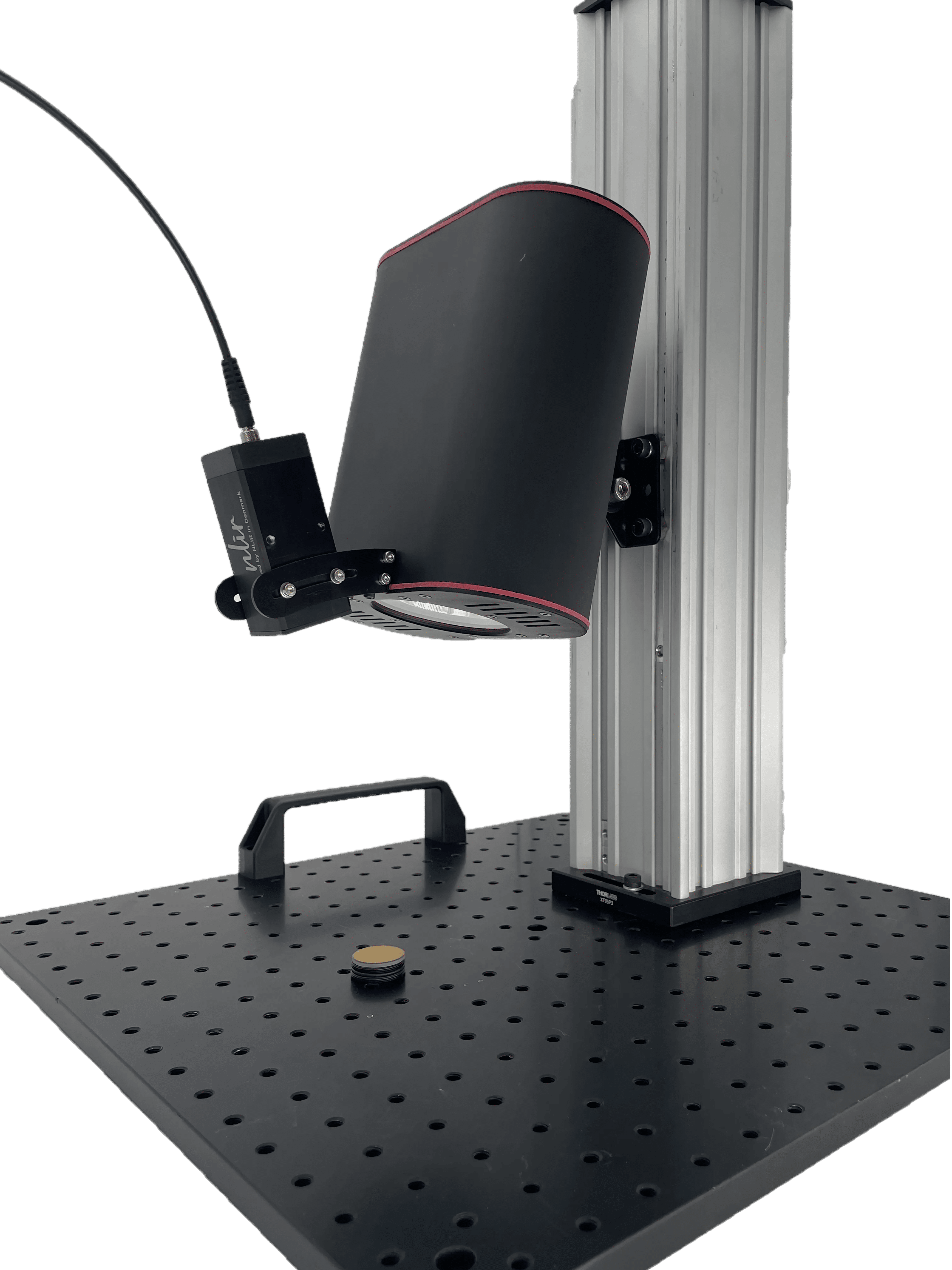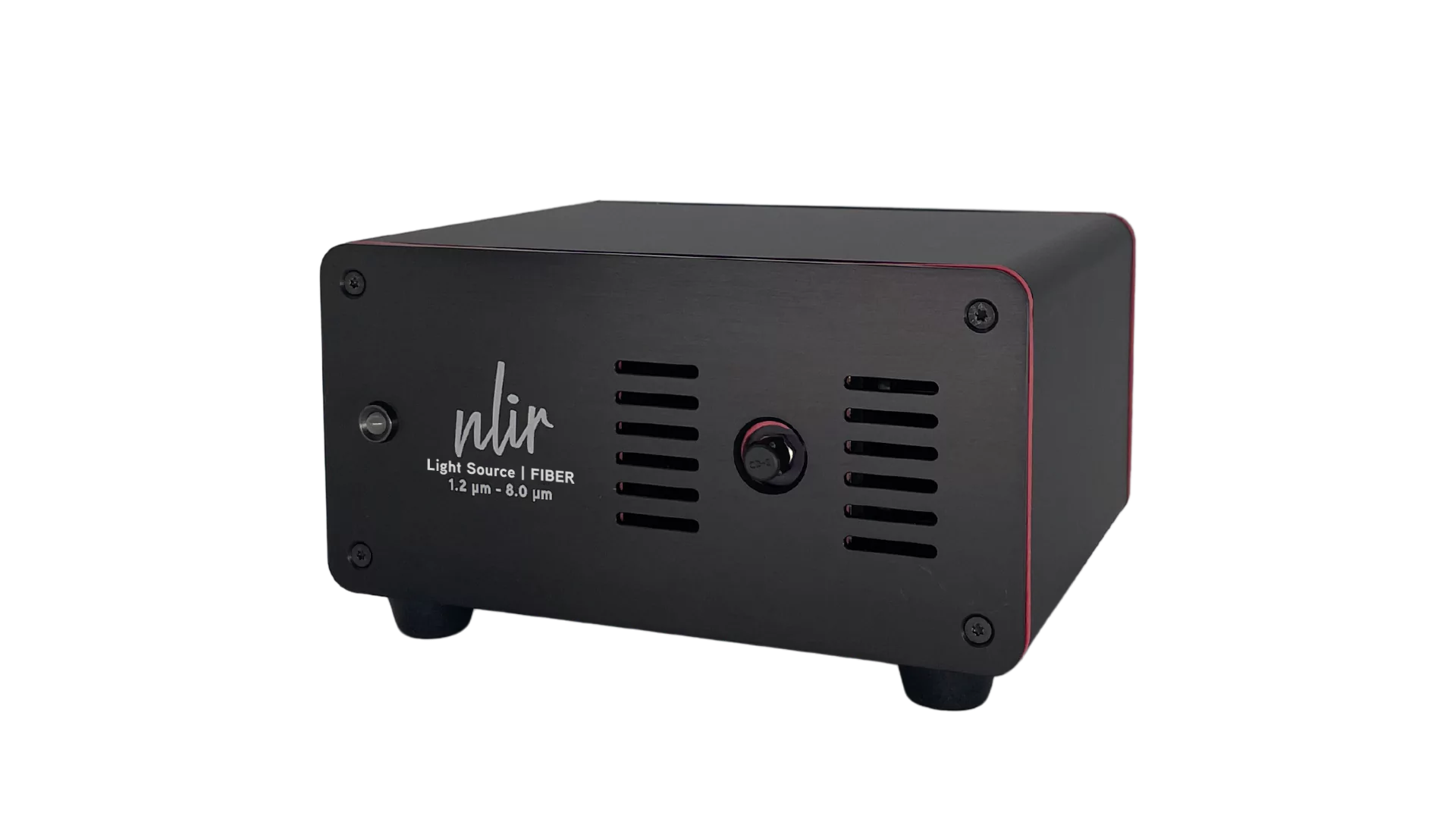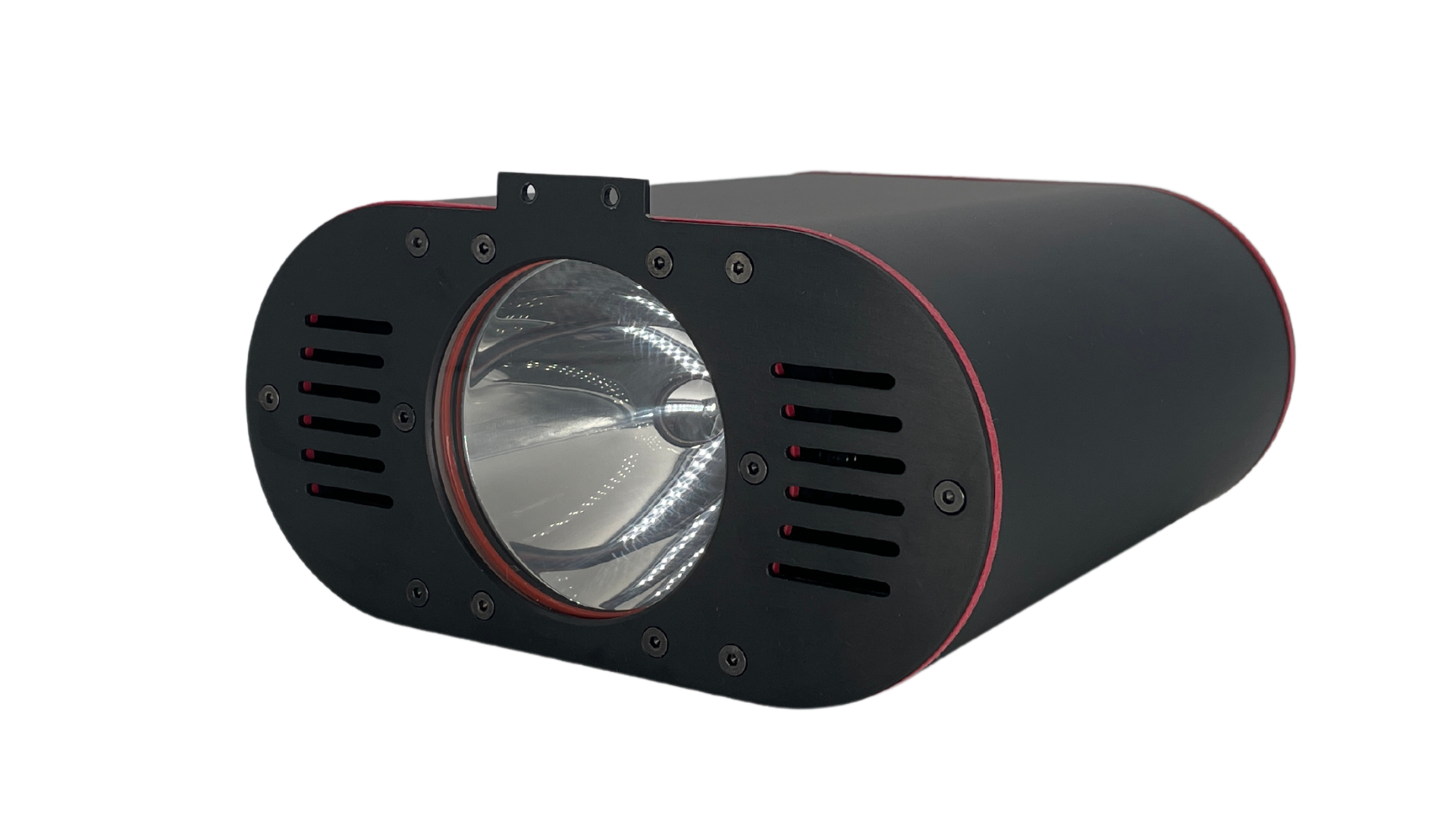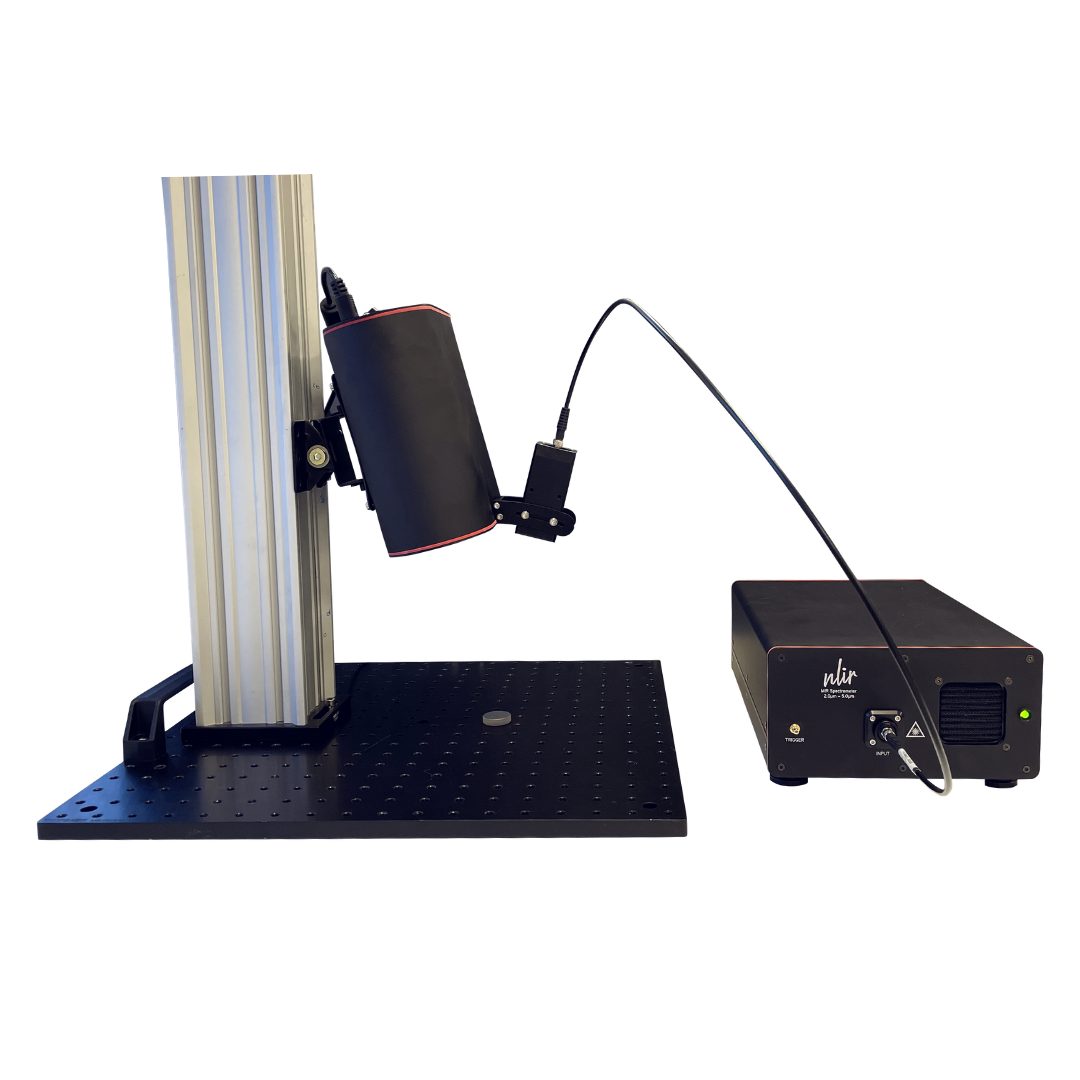Thermal Infrared Light Sources: The Ideal Companion for the MIDWAVE 2.0-5.0µm Spectrometers
A wide variety of applications and measurements use a thermal infrared light source or infrared radiation. Compared to other light sources, high-temperature IR light sources are relatively cheap and only require simple electronics. They emit high-power light that is stable and reliable.
FIBER Light Source: A Fibered Solution to Deliver IR Light to Your Samples
Thermal sources produce light that is incoherent and emitted in all directions, making it difficult to guide and focus the light onto a high-intensity sample. NLIR’s fiber-coupled infrared light source makes it easy to bring mid-infrared light to a sample. FIBER light source is plug-and-play, turns on in a few seconds, and is actively cooled so that no parts are too warm to touch.
AURALIS Light Source: A Free-Space Directed Light Source for Reflection Measurements
The NLIR’s AURALIS Light Source directs light from a silicon carbide emitter onto an approximately 1 cm diameter spot at a 150 mm working distance. This broad illumination area ensures that even rough and uneven samples reflect light towards the collection optics. The light source is plug-and-play, activating in just a few seconds. Additionally, its active heat management system ensures that no components become excessively warm to the touch.
See all mid-infrared spectrometers and detectors
Inspection of Infrared Coatings by Absorption or Transmission
One of the biggest challenges in coating inspection is ensuring optimal light guidance to and from the sample. We offer two simple fiber coupled interface bundles for optical coating inspection that are specifically designed to address this issue. Whether you need to measure samples in transmission or reflection, our interfaces can help you get started and achieve accurate results quickly. Plus, with a minimum detectable power of only 5 pW/nm in the MIDWAVE spectrometer, even dark or low reflective samples can be measured with ease.
Characterization and Sorting of Plastics
The identification of plastics is possible with near-infrared spectroscopy, which is able to sort a variety of plastics with a high degree of accuracy. In particular, black plastics present a unique challenge since they are difficult to detect and pose many difficulties in practical applications. However, Mid-IR is not absorbed by black plastics to the same degree as Near-IR light, enabling identification of all plastics. For example, a plastic sorting facility baesd on Mid-IR spectroscopy has the possibility of maximizing plastic recycling just as much as other plastics.
